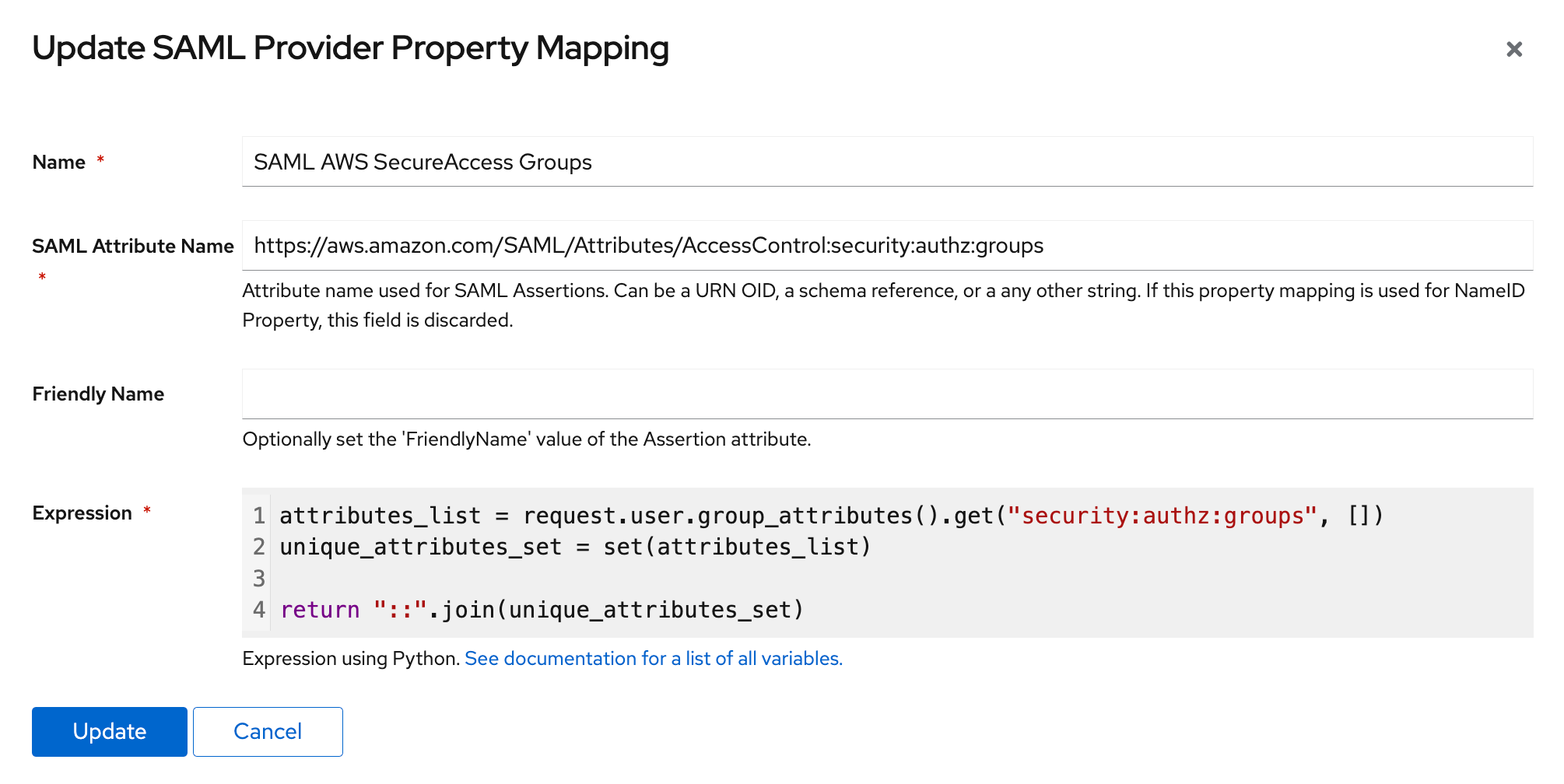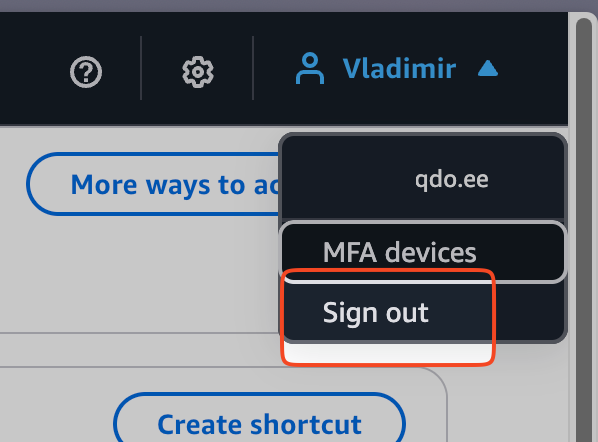Use AWS SSO as ABAC IAM for granular secure access
Intro
Most security teams want to limit developers' access to only their own resources in AWS. This is especially true for databases. Previously, we solved this by creating multiple IAM roles, where users would choose the appropriate role to access specific cloud resources. This works fine on a small scale, but doesn't scale beyond 3+ roles or teams.
Instead, we can use attribute-based access control (ABAC) to compare user properties with resource tags and determine access permissions.
I decided to write this article because I couldn't find a guide on how to do it. The AWS Doc is quite limited.
AWS SAML vs AWS SSO
The AWS SAML auth provider linked with an IAM role has many more capabilities for SAML attributes and is well-documented.
AWS SSO has limited functionality and does not support:
- Multi-valued SAML attributes
TransitiveTagKeys
To pass attributes from an IdP via SAML to an assumed session's PrincipalTag, you can use only https://aws.amazon.com/SAML/Attributes/AccessControl:<name> with string-typed values up to 460 bytes long.
We use :: as a separator for concatenating multiple values and : as a logical separator within individual entities.
Schema
Authentication and authorization flow:
Diagram source
sequenceDiagram
participant User
participant AWS_SSO as AWS SSO
participant IDP
participant Target_AWS_Account as Target AWS Account
User->>AWS_SSO: Initiates Login
AWS_SSO->>IDP: Redirects user for authentication (SAML Request)
IDP-->>User: Login Page
User->>IDP: Enters Credentials
IDP->>AWS_SSO: SAML Assertion with<br/>AccessControl attributes
AWS_SSO->>Target_AWS_Account: AssumeRoleWithSAML
Target_AWS_Account-->>AWS_SSO: Assumed Role Session<br/>with principal tags
AWS_SSO-->>User: Grants access to AWS Account
IdP
To configure role attributes, we'll use Authentik (our SAML identity provider) that's already configured with AWS SSO.
The first step is to create the Property Mappings.

attributes_list = request.user.group_attributes().get("security:authz:groups", [])
unique_attributes_set = set(attributes_list)
return "::".join(unique_attributes_set)
This code collects properties from the user's assigned groups, deduplicates them, and concatenates the results using ::.
After configuring the property mappings, log out of AWS SSO and log back in to test the configuration.

You should see a new record for AssumeRoleWithSAML in your CloudTrail events. The principalTags from this event can be used in IAM conditions.
{
"requestParameters": {
"sAMLAssertionID": "_550580ed-e988-46da-bebd-38d9bcd1f156",
"roleSessionName": "[email protected]",
"principalTags": {
"security:authz:dbusers": "beta:developer-iam::prod-us:developer-iam",
"security:authz:groups": "beta:pfr:project::any:rpsql:project"
}
}
IAM
As mentioned in the beginning, to limit developers to certain resources in their domain of responsibility, we'll match the passed aws:PrincipalTag/security:authz:groups with a regexp formed from the ResourceTag assigned to the database:
condition {
test = "StringLike"
values = flatten([
[for env in var.allowed_environment : "*${env}:$${ssm:ResourceTag/security:access:st}:$${ssm:ResourceTag/security:access:group}*"],
["*any:$${ssm:ResourceTag/security:access:st}:$${ssm:ResourceTag/security:access:group}*"]
])
variable = "aws:PrincipalTag/security:authz:groups"
}